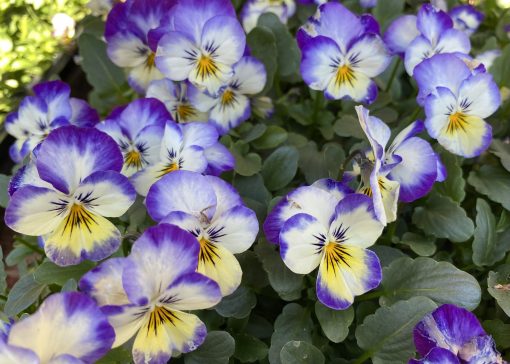
On this rainy day I’m picturing my garden and deck this summer filled with colorful flowers. The bumblebees will be happy, the hummingbirds will be happy, I’ll be happy. Or will I?
I recently read about a study in France that suggests that humans are quickly altering the way flowers are reproducing and it’s happening in just 20 generations. Toxic pesticides and vanishing habitats have driven down the populations of bees and other pollinators so some flowers have evolved to fertilize their own seeds more often than the seeds of other plants.
Bumblebee populations have declined and it may be that the field pansy flowers in the study are investing their energy into using their own pollen to fertilize their own seeds more, rather than produce big flowers that lure pollinators.
The researcher in the study, Dr. Cheptou an evolutionary ecologist at the University of Montpellier, was inspired to carry out the study when it became clear that bees and other pollinators were in drastic decline. How would flowers adapt? Would they find another way to reproduce?
The field pansies have always been able to reproduce using both methods. But a selfing flower can use only its own genes to produce new seeds. Sexual reproduction allows flowers to mix their DNA, creating new combinations that make them better prepared for diseases, drought and other challenges that future generations may face.
Tracking the evolution of the field pansy was made possible by the cache of seeds from the National Botanical Conservatory in France collected in the 1990s and early 2000s.
The researchers compared these old flowers with the new ones found in the countryside. After growing the new and old seeds side by side in the lab under identical conditions, they discovered that selfing had increased 27 percent since the 1990s.
Other changes of note were that although the new field pansies had not changed in their overall size, their flowers had shrunk by 10 percent and produced 20 percent less nectar.
So this change in reproduction may be making a bad situation worse for pollinating insects. The genetic limitation of selfing could put plants at risk of extinction.
Flowering plants are dealing with other issues such as global warming which speeds up the growth of the flowers and shrinks the window of time before the flower wilts and has nectar for pollinators.
Another study, however, on morning glories in the southern United States, found that between 2003 and 2012, the flowers became bigger, not smaller. Is this a strategy to keep attracting bees as they become less common?
Being an optimist I’m hoping that nature will adapt and figure out how to keep everybody happy.
